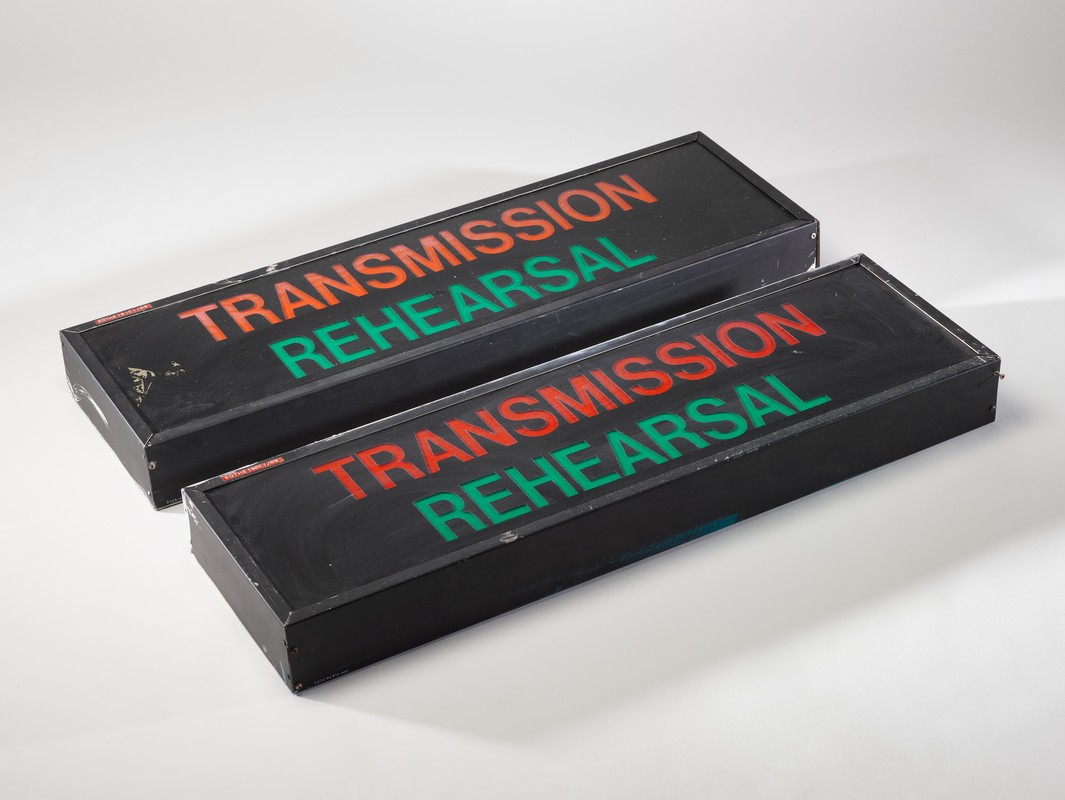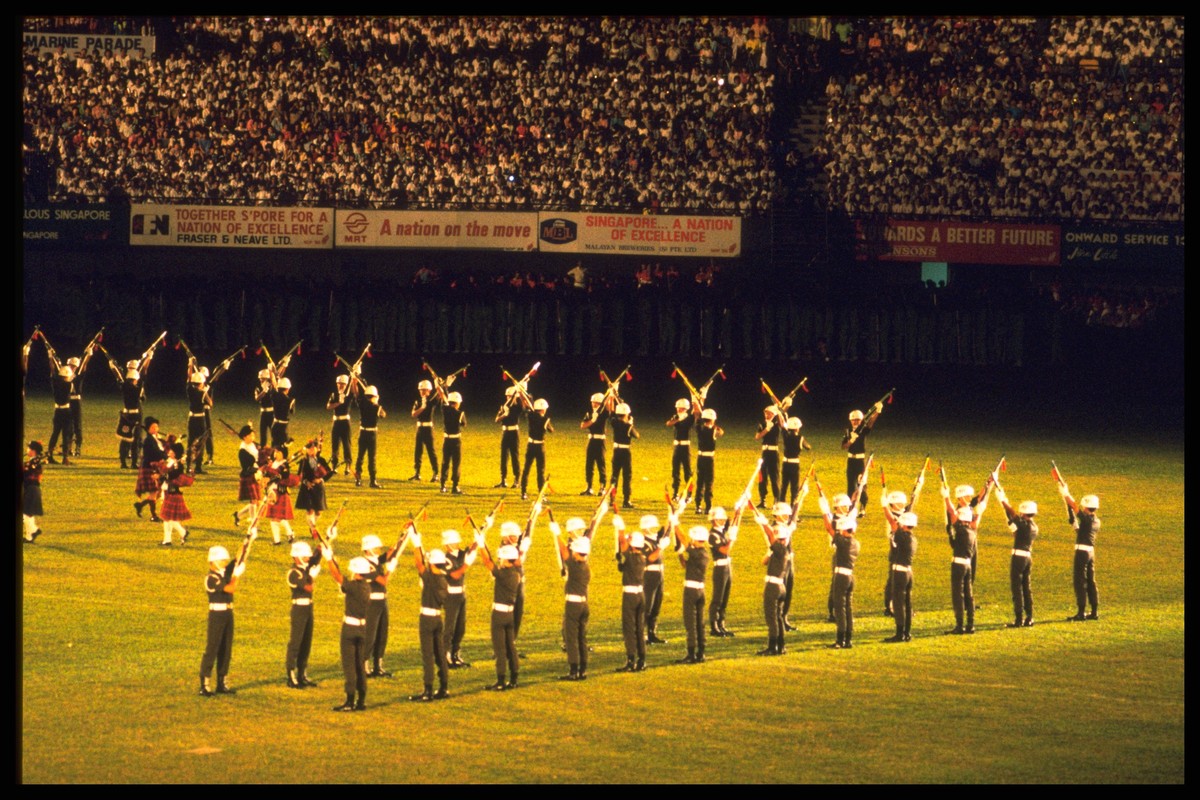A brief history of radio broadcasting in Singapore
The beginning of radio experiments (1921–1935)
In 1921, A. L. Birch (birth and death years unknown), a European electrical engineer from Johor, brought the first radio system to Malaya, marking the beginning of private radio broadcasting experiments in the country. In 1923, Birch gathered European amateur radio enthusiasts like himself to form Johor Wireless Society (1923–1924), the first of its kind in Malaya. In 1924, the Singapore Wireless Society was also established.
In May 1933, the colonial authorities granted the first broadcasting licence to the Radio Service Company of Malaya. The broadcasting studio of the company’s radio station, Z.H.I., was located next to its storefront on No. 2 Orchard Road. Z.H.I. was an amateur radio station that aired weekly on Monday, Wednesday, Thursday evening, and Sunday morning to the whole of Malaya. Although this was the first stable radio broadcast in the country, its audience was limited to the middle and upper classes of the European community. Radio experiments were expensive and not only required the purchase or rental of transmitting equipment, but also a registration licence issued by the colonial government for the use of wireless equipment. Furthermore, it was necessary to buy expensive receivers in order to obtain this licence, which itself cost five dollars. These factors prevented radio from becoming a part of people’s daily lives at the time.

A new form of entertainment (1936–1942)
On 21 July 1935, the first commercial broadcasting station was established in Singapore when the colonial government’s Postal and Telegraph Department granted a broadcasting licence to the British Malaya Broadcasting Corporation (BMBC). At the end of 1963, Z.H.I.’s broadcasting licence was terminated, resulting in BMBC’s access to exclusive broadcasting rights in Singapore.
To ensure that other electronic devices in the city did not interfere with radio signals, BMBC intentionally set up their office and medium-wave transmitters at Caldecott Hill on Thompson Road. The corporation began broadcasting under the call sign ZHL in March 1937, and the station was on air for 36 hours a week by 1938. In addition to English broadcasts which catered mainly to the European community, Radio ZHL also introduced one-hour music programmes in Chinese, Malay, and Tamil for local listeners. The first Chinese programme director was Sze Chu Sian (1910–1990).
At the end of the 1930s, though World War II was in full swing in Europe, Malaya had not yet been directly affected by the war and broadcasting was still seen as a British tool for propaganda in the Far East. As such, the British colonial government acquired BMBC on 2 March 1940 and rebranded it as the Malaya Broadcasting Corporation (MBC). Under the jurisdiction of the Ministry of Information, MBC continued to provide broadcasting services to Singapore and the Federated Malay States. Radio broadcasting in Singapore then entered a new phase in its development after it was officially taken over by national institutions.
MBC grew steadily under the leadership of director Eric Davis (1906–unknown). Besides training a large number of Asian employees, four new radio transmitters were installed at Caldecott Hill in the transmitting station previously owned by BMBC to provide a more stable broadcasting service to Singapore and the Malayan Peninsula. At the same time, MBC relocated its broadcasting studio and office to Cathay Building, and introduced multilingual news segments in its daily broadcast. On top of 12 English-language and nine Chinese-language (including dialects) news segments, current affairs were also reported in other languages such as Malay, Tamil, French, Arabic, and Dutch.
When the war broke out in 1942, a group of MBC staff retreated to India and Jakarta to continue broadcasting mere days before the Japanese occupied Singapore. The broadcasting facilities in Singapore were later taken over by the Japanese and renamed Syonan Hoso Kyoku. During the Japanese Occupation of 1942 to 1945, the radio station was used to broadcast Japanese propaganda.
Radio Malaya, the official post-war broadcaster (1946–1963)
After the Japanese surrendered in September 1945, MBC was immediately taken over by the British Military Administration (Malaya) and underwent restructuring. In 1946, the administration established the Department of Broadcasting to oversee broadcasting works in the whole of Malaya. In April of the same year, Radio Malaya was formed to broadcast news regarding the Commonwealth of Nations to the people of Malaya, educate the public, and provide entertainment. The station’s headquarters was in Singapore, while branch offices were set up in Penang, Malacca, and Kuala Lumpur. Operation and management responsibilities were shared between the colonial government of Singapore and the Malayan Union government. In a bid to address the shortage of teaching resources in post-war times, Radio Malaya also set up a school division in January 1946 to produce educational radio programmes for classroom teaching in schools of different language streams.1
In 1950, during the state of emergency, the colonial government’s Emergency Information Service began broadcasting special programmes to rural communities and new villages. Radio Malaya’s Mandarin, English, Malay, and Tamil programmes also gradually Malayanised in line with the government’s efforts during the Emergency. In 1953, the Community and Rural Broadcasting department was renamed Rural Broadcasting, merging with the programming division of Radio Malaya.

From 1950 onwards, Radio Malaya’s air time grew together with its content, which became more diverse. Traditional tales narrated in dialect by Lee Dai Soh (1913–1989), Ong Toh (1920–1999), and Ng Chia Kheng (1912–2003) were particularly popular. The prevalence of radio in the 1950s also led to the publication of the radio magazine Nanyang Radio Weekly.
Impact of political changes on broadcasting (1963–1965)
Political movements were common in Singapore and Malaya between 1956 and 1958, and changes in the political landscape naturally affected broadcasting operations. In 1957, the Federation of Malaya became independent and Radio Malaya was split into two, with the Singapore headquarters remaining under the control of the colonial government. When Singapore attained self-governance in 1959, Radio Singapura was established as the official broadcasting institution under the management of the Singapore government.
However, following the merger of Singapore and Malaya in 1963, Radio Singapura and Radio Malaya merged once again to form Radio and Television Malaysia/Singapura. In February of the same year, Singapore’s then-Minister for Culture S. Rajaratnam (1915–2006) inaugurated Television Singapura. When Singapore separated from Malaysia and gained independence in August 1965, Radio Singapura and Television Singapura were combined into Radio Television Singapore (RTS) and placed under the management of the Ministry of Culture.
A new era of broadcasting
On 1 February 1980, RTS was converted into a statutory board known as the Singapore Broadcasting Corporation (SBC), ushering in a new era of commercialised broadcasting. During this period, the record industry flourished, and many popular local and international singers promoted their records on radio shows. Long Hu Bang, a Chinese weekly music show featuring the top ten hits, was also launched in 1983.
The 1990s saw the blossoming of a wide range of Chinese radio stations, each with its own distinct character. These included: YES 933, NTUC Radio Heart 100.3 FM, CAPITAL 958, LOVE 972, and Dongli 88.3FM (now known as 88.3JIA). Radio Singapore International (RSI) was also established in 1994 to broadcast the sounds of Singapore to the rest of Southeast Asia.
On 1 October 1994, SBC became fully privatised, and all its broadcasting channels were brought under Radio Corporation of Singapore Pte Ltd (RCS), a subsidiary of Singapore International Media (SIM). In June 1999, the company underwent further restructuring. RCS was renamed Mediacorp Radio and Media Corporation of Singapore (MCS, Mediacorp) took charge of operating all radio and television stations.
In 2001, Singapore Press Holdings (SPH) ventured into radio broadcasting, through SPH UnionWorks, a joint management between SPH and NTUC Media. NTUC Radio Heart was rebranded as UFM100.3 in the same year. In 2013, SPH acquired NTUC Media’s stake in SPH UnionWorks. In 2018, SPH launched another Chinese radio station 96.3 Hao FM.
Looking back at the history of radio broadcasting in Singapore, it is evident that its development has been closely tied to societal shifts and the evolving needs of listeners. The challenges posed by the internet, podcasts, and other new media platforms in the 21st century will undoubtedly require radio stations in Singapore to adapt their approach in order to continue informing and entertaining their listeners.
This is an edited and translated version of 新加坡无线电广播发展简史. Click here to read original piece.
| 1 | School broadcasting in Tamil only began in 1952. |
Chua, Ai Lin. “The Story of Singapore Radio (1924–41)”, BiblioAsia 12, No. 1 (2016): 22–27. | |
McDaniel, Drew O. Broadcasting in the Malay World: Radio, Television, and Video in Brunei, Indonesia, Malaysia, and Singapore. New Jersey: Ablex Publishing Company, 1994. | |
Shih, Hui Min. Ting, shuo 70: Xinjiaopo zhongwen guangbo jishi (1936–2006) [A Sound Celebration: History of Chinese radio broadcasting in Singapore (1936–2006)]. Singapore: CAPITAL 958, YES 933, LOVE 972, 2006. | |
Tay, Philip J., Choo Lian Liang, et al., eds. Huiwang jialigu shan [Reflections from Caldecott Hill]. Singapore: Global Publishing, 2021. |










